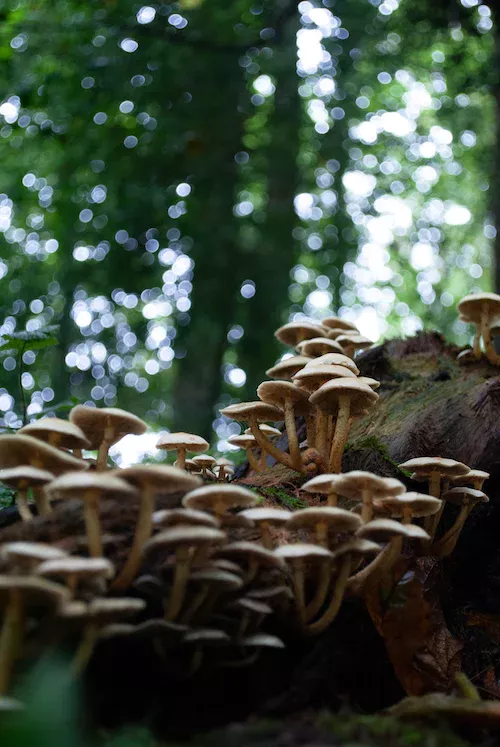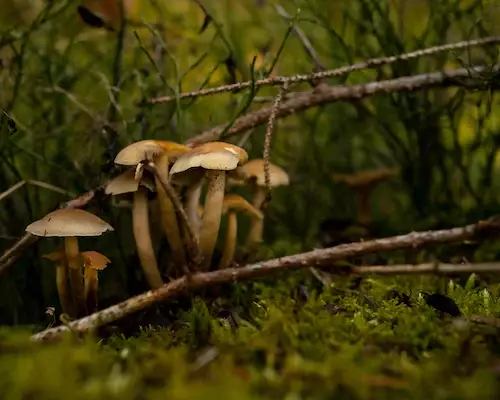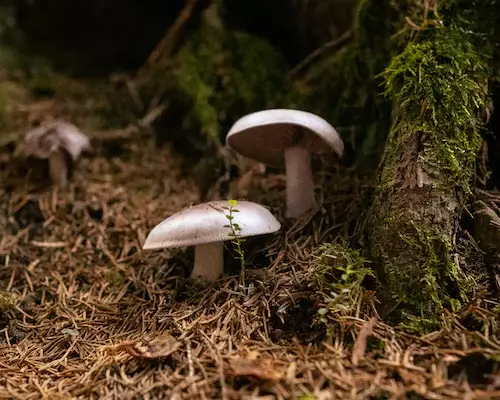What Investment Is Required for Mushroom Farming? (2023)
Mushroom farming is an increasingly popular agricultural venture that has been gaining traction in recent years due to its profit potential. With the right investment, mushroom farming can be a lucrative business that yields a steady income. In this article, we will explore the different types of investments that are required to get started in this field and the potential returns that are achievable.
Investment for start-up costs is required to purchase land, buildings, infrastructure, and equipment for mushroom farming, including substrates, spawns, and fertilizers. Pest control products, lightning, and climate control systems are also needed to keep the farm from operating productively.
By the end of this article, you will have a good understanding of what investment is required for mushroom farming and the potential it offers.
Summary
- Investing in mushroom farming requires a significant commitment of both time and money.
- Depending on the size of the operation, start-up costs can range from a few hundred dollars to several thousand dollars.
- With the right investment and dedication, mushroom farming can be a rewarding and lucrative business.

On this page:
10 Financial Outlays Need for Mushroom Farming in 2023
This list of investments required for mushroom farming in 2023 provides an overview of the investments needed to get started. It covers the cost of materials, equipment, and labor necessary to begin a successful mushroom farm. Whether you're a beginner or an experienced mushroom farmer, this list of investments will help you get the most out of your investment.
1. Purchasing land suitable for mushroom farming
When looking for land to purchase for mushroom farming, there are several factors to consider.
- The land should be reasonably flat and well-drained, with a pH level between 6.0 and 6.8.
- The soil should be rich in organic matter, such as compost or manure.
- It should have a high moisture content to provide a suitable environment for mushroom growth.
The size of the land will depend on the scale of mushroom farming you’re planning. Generally, a minimum of one acre is needed to operate a small-scale mushroom farm. A large-scale operation may require multiple acres, depending on the quantity and type of mushrooms you’re growing.
2. Constructing a suitable building to house the mushroom farm
The building should be designed to provide good air circulation, adequate light, and proper temperature and humidity control.
- If the operation is relatively small, a single room with proper ventilation and temperature control could be sufficient.
- If the mushroom farm is larger, multiple rooms may be necessary to accommodate different types of mushrooms or growing and harvesting areas.
The next step is to decide on the type of construction materials and methods to be used. Depending on the size and scope of the operation, the construction materials and methods will vary.
- For a single room or small operation, lightweight materials such as plywood and plastic sheeting may be sufficient.
- For larger operations, more durable materials such as steel or concrete may be needed.
3. Installing a water supply and drainage system is needed for a mushroom farm
Installing a water supply and drainage system is essential for a mushroom farm, as it ensures the farm has a constant and reliable supply of water for growth and production. The cost of installing a water supply and drainage system for a mushroom farm depends on the size and complexity of the system.
In addition to the cost of installation, there may also be a cost for the materials and supplies needed for the system. This could include pipes, valves, pumps, tanks, and other materials used to create the water supply.
4. Purchasing necessary types of equipment for the mushroom farm
Purchasing spore inoculators, composters, spawn makers, and other necessary equipment for your mushroom farm is a must. Mushroom farming requires specialized equipment to get the job done. Here's a list of some of the necessary equipment and their respective prices:
- Spore inoculators- A tool used to inject precise amounts of mushroom spores into an inoculation point. Price range: $10–$50
- Composters- A container used to mix and store compost materials. Price range: $50–$100.
- Spawn Makers- A tool used to create spawn from inoculated grain or sawdust. Price range: $50–$200
- Incubators- A device used to maintain a steady temperature for colonization of spawn. Price range: $50–$400
- Fruiting Chambers- A container used to maintain the proper environmental conditions for mushrooms to fruit. Price range: $50–$500
- Spawn Bags- Bags used to store and grow spawn. Price range: $10–$50
- pH Meters- A tool used to measure the acidity or alkalinity of a solution. Price range: $50–$200
- Sterilizers- A device used to kill microorganisms. Price range: $50–$500
- Labels- Pre-printed labels used to identify mushrooms. Price range: $10–$50

5. Purchasing straw, sawdust, wood chips, and other necessary substrates for the mushroom farm
Straw is the most common substrate used for mushroom farming and is relatively inexpensive, costing between $2 and $4 per bale. Straw is readily available at feed stores, agricultural suppliers, and online.
Sawdust is another popular substrate for growing mushrooms, costing between $4 and $6 per bag. Sawdust is available from woodworking shops, sawmills, and online.
Wood chips are also commonly used for mushroom farming and cost between $2 and $5 per bag. Wood chips can be purchased from garden centers, hardware stores, and online.
Other substrates used for mushroom farming include compost, manure, peat moss, and gypsum, and these can range in price depending on the type and quantity purchased.
6. Purchasing mushroom spawn for the desired mushroom species
Mushroom spawn is a material used to propagate mushrooms and is available for purchase from a variety of different sources. The cost of mushroom spawn depends on the species of mushroom being grown, the amount purchased, and the supplier.
Prices can range from as low as $10 for a small amount of spawn to over $100 for larger quantities.
When purchasing mushroom spawn, it is important to buy from a trusted source that can confirm the quality of the spawn and provide information on the strains available. It is also important to research the desired mushroom species to make sure the spawn will be compatible with the growing conditions.
7. Purchasing organic or chemical fertilizers for the mushroom farm
Organic fertilizers are typically more expensive than chemical fertilizers. The price range for organic fertilizers can vary depending on the type of fertilizer used and the quantity purchased.
Generally, organic fertilizers range from $2 to $4 per pound for small quantities and up to $15 to $20 per pound for larger quantities.
Chemical fertilizers, on the other hand, are usually much less expensive than organic fertilizers. The price range for chemical fertilizers is typically between $0.50 and $2 per pound.
Regardless of which type of fertilizer is chosen, it is important to purchase the right amount of fertilizer to ensure that the mushroom farm is getting the most out of the fertilizer. Too little fertilizer can result in stunted mushroom growth, while too much fertilizer can lead to nutrient toxicity. It is important to read the label on the fertilizer to determine the proper application rate.
8. Purchasing pest control products for the mushroom farm
One of the most common pest control products is fungicide. Depending on the type of fungicide and the size of the mushroom farm, prices can range from $10 to $100 or more.
Insecticides are also important for controlling a variety of pests. Prices for insecticides depend on the type of insecticide and the size of the farm. Generally, insecticides range from $10 to $100 or more.

9. Installing lighting fixtures for the mushroom farm
The cost of lighting fixtures for a mushroom farm depends on the type of lights being used.
- High-efficiency LED lights are the most expensive, costing anywhere from $10 to $30 per fixture.
- Fluorescent lights are cheaper, costing around $5 to $15 per fixture.
- High-pressure sodium (HPS) and metal-halide (MH) lights are the least expensive, with prices ranging from $3 to $10 per fixture.
10. Setting up climate control systems for the mushroom farm
Climate control systems typically involve the installation of air conditioning and heating units, as well as humidifiers and dehumidifiers. The quality of the air inside the mushroom farm should also be monitored regularly to ensure that it is free of dust and other contaminants. This can be done through the use of air filters and other devices.



